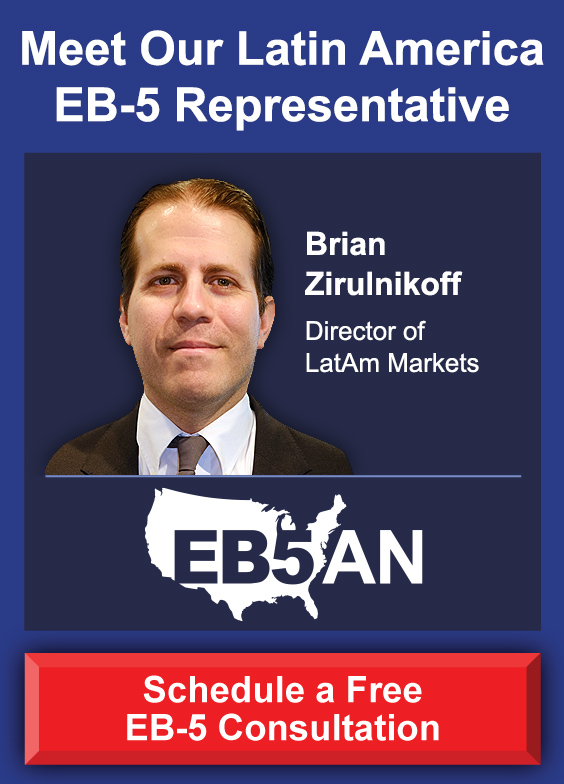The COVID-19 pandemic had a profound impact on virtually every aspect of our lives, including the world of immigration.
End of Deadline Flexibility
Impact on EB-5 Industry
What is the EB-5 Immigrant Investor Program?
Get Started on Your EB-5 Visa
End of Deadline Flexibility
In March 2020, the United States Citizenship and Immigration Services (USCIS) had to adapt to a rapidly changing landscape and implement new policies to ensure the safety of its employees and the public.
One of these policies was the introduction of deadline flexibilities for certain filings, which allowed individuals and businesses, under specific circumstances, to submit various applications after their official deadline. However, as the post-COVID era has set in these flexibilities have come to an end.
Deadline flexibilities were first introduced by USCIS in response to the pandemic in March 2020 and were subsequently extended several times. Most recently in January of 2023, they announced the final extension, and the era of leniency ended as of March 23, 2023. All USCIS requests with deadlines dated after this date must now be responded to by their listed deadlines.
Exceptions to these accommodations may be granted on a case-by-case basis for emergency or unforeseen circumstances. USCIS has announced, however, that they will not formally extend a deadline, even in cases where their notice was not mailed or received in a timely manner.
The initial flexibilities applied to a range of filings, including Requests for Evidence (RFEs), Notices of Intent to Deny (NOIDs), and various other forms and documents. Under the flexibilities, applicants were allowed to submit these filings after the official deadline if they could demonstrate that their delay was due to COVID-19-related reasons, such as illness, travel restrictions, or the closure of USCIS offices. The flexibilities also applied to certain employment-based petitions, such as H-1B and L-1 petitions, which allowed employers to continue to employ foreign workers whose visas were due to expire.
The deadline flexibilities were a much-needed relief for many individuals and businesses who were struggling to navigate the challenges posed by the pandemic. They allowed for a degree of flexibility and leniency in what were often challenging circumstances.
For example, someone who was unable to travel due to a quarantine order could still file their application without fear of missing the deadline. Similarly, businesses that were experiencing financial difficulties due to the pandemic could still keep their foreign workers employed by filing their petitions late.
Impact on EB-5 Industry
The aftermath of the pandemic and the lapse of the EB-5 Regional Center program in June 2021 had a significant impact on the EB-5 industry, causing massive disruptions to consular processing of EB-5 immigrant visas abroad.
Even today, some U.S. embassies still face “Covid-related” backlogs three years after the pandemic started, and some consulates have stopped processing certain visa cases altogether, leading foreign nationals to file mandamus lawsuits to push the U.S. Department of State to reopen visa divisions and move cases forward.
The pandemic’s economic fallout caused some EB-5 development projects to undergo difficult financial times, resulting in investors experiencing significant delays in the repayment of their EB-5 investment principal.
However, with the passage of the EB-5 Reform and Integrity Act of 2022 (RIA), the USCIS has resumed processing regional center-based I-526 petitions, and most U.S. consulates have resumed issuing immigrant visas.
What is the EB-5 Immigrant Investor Program?
The EB-5 Immigrant Investor Program is an immigrant visa category in the United States created by the Immigration Act of 1990. The purpose of the EB-5 visa program is to stimulate the U.S. economy through job creation and capital investment by foreign investors.
Under the EB-5 program, foreign investors can apply for a green card by investing a minimum of $1.05 million, or $800,000 in targeted employment areas (TEAs), in a new commercial enterprise (NCE) that creates and preserves at least 10 full-time jobs for U.S. workers.
If the investor meets the program’s requirements, they and their eligible family members can obtain permanent residency in the United States. The EB-5 program has become an increasingly popular option for foreign investors seeking to obtain U.S. permanent residency.
Get Started on Your EB-5 Visa
Before making any investment, it is always prudent to conduct due diligence. We strongly suggest that you consult with a knowledgeable immigration attorney to gain a better understanding of the EB-5 visa application process.
At EB5AN, we take pride in offering secure projects as part of our participation in the regional center program. If you want to know more about our available projects or wish to take advantage of a free consultation, we would be delighted to hear from you.












